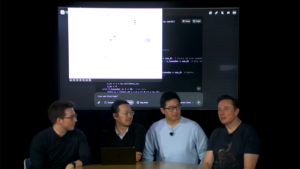Meta AI Unveils Perception Language Model (PLM): A Transparent and Reproducible Vision-Language Model for Addressing Complex Visual Recognition Challenges

Meta AI Introduces the Perception Language Model (PLM)
Meta AI has recently launched an innovative model called the Perception Language Model (PLM). This new development aims to enhance visual recognition tasks by combining vision and language, thereby facilitating better interactions between machines and complex visual data.
What is the Perception Language Model (PLM)?
The Perception Language Model (PLM) is designed to analyze visual inputs and connect them with relevant linguistic context. This integration allows the model to perform various tasks effectively, such as identifying objects in images, generating descriptions, and responding to questions about visual content.
Key Features of PLM
Open and Reproducible: Meta has made the PLM accessible for researchers and developers, promoting transparency and collaboration in the field of artificial intelligence.
Advanced Visual Recognition: With capabilities to tackle challenging visual tasks, PLM enhances the understanding of images through its sophisticated algorithms.
- Multimodal Approach: By incorporating both visual and textual data, PLM offers a more nuanced perspective that can improve how machines interpret visual inputs.
Applications of PLM
The versatility of the Perception Language Model opens the door to numerous applications across various sectors:
1. Healthcare
- Medical Imaging: The model can assist in analyzing medical images, helping radiologists identify conditions quickly and accurately.
- Telemedicine: By interpreting patient-uploaded photos or videos, PLM can aid in remote consultations.
2. E-commerce
- Product Recognition: Businesses can use PLM to automatically categorize products based on images, improving customer experience.
- User Interaction: Shoppers can ask questions about products through images, enhancing user engagement.
3. Education
- Interactive Learning Tools: Students can utilize PLM-powered applications to ask questions about images, facilitating deeper understanding and engagement.
4. Social Media
- Content Moderation: PLM can help identify harmful content in images, ensuring user safety.
- Personalized Content: Enhanced image recognition can tailor content suggestions based on user preferences.
How PLM Works
The model leverages deep learning techniques to form connections between visual elements and their related textual descriptions. This process includes multiple steps:
Image Processing: The system analyzes images using convolutional neural networks (CNNs) to extract features.
Textual Analysis: Natural language processing (NLP) techniques are used to comprehend and generate text related to visual content.
- Integration: The model combines insights from both visual and linguistic data to produce coherent outputs that can inform, describe, or assist users.
Conclusion
The introduction of the Perception Language Model marks a significant advancement in artificial intelligence, particularly in the realm of visual recognition. By fostering collaboration and accessibility, Meta AI aims to drive innovation within the AI community, providing tools that enhance the understanding and interaction with visual information.




